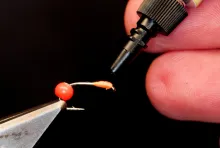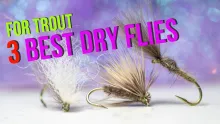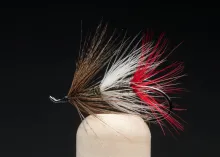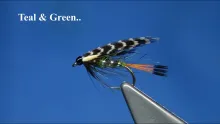Ok - so - how happy was I to see that someone finally convinced Scott Sanchez to write a book?
Updated or edited 6 months ago
Ok - so - how happy was I to see that someone finally convinced Scott Sanchez to write a book? Not being an Montana insider, I was not entirely familiar with his tying, but his reputation as a excellent fly tyer extended far beyond that mighty state's borders. While I've seen a few of his magazine articles and his contributions to the works of Jack Dennis, I was intrigued at the possibility of what he might be able to do with an entire book of his own.
I'll save you the suspense. This is a great book.
The book opens with an excellent biography of Scott as it pertains to his involvement in the fly tying and fly fishing industry. To this desk jockey - his life seems pretty darn cool. I mean - who doesn't dream of working in a fly shop, 100% immersed in fly fishing on a daily basis? I'm sure those who are would be quick to say it's not quite as fun as it sounds, but geez. I dunno. It can't be that bad or we'd never hear about guys like Scott Sanchez.
The first "real" chapter in the book deals with materials. Thankfully, this is not the Materials 101 course you'd get in a general fly tying text. Rather, Scott tells us about what he has learned through a lifetime of tying flies for a living, helping us understand materials from a commercial tyer's point of view, particularly those aspects which support the flies he presents in the remainder of the book. The section on hooks, for instance, contains a photo of one of the flies in the book that are tied on that particular model of hook.
From here, the book is broken into different chapters, with each chapter having a specific theme. In case you didn't already guess, the theme is trout flies. They are:
1. Mayflies
2. Caddisflies
3. Stoneflies
4. Midges
5. Versatile Emergers and Cripples
6. Terrestrials
7. Attractors and Cross-Imitators
8. Streamers
Within each chapter are a number of individual patterns, each with supporting text, a recipe, and step-by-step procedural photographs. The pattern recipes are shown on top of a full page photograph of the materials used to tie the flies. I know that is a common technique these days, but it does not seem overused. I like seeing the materials in their raw form before we jump into the procedurals. No expense was spared in the presentation of the tying sequences, as most of the patterns have a dozen or so steps shown, each with captions offering supporting text. Variations on each pattern are shown at the end of the sections, with a couple photos of the different patterns along with their recipes.
Try as I might, I can find nothing to complain about with Scott's book. The text is clear and interesting, the photography world class, the layout pleasing to the eye, and the selection and variety of flies is outstanding. The level of originality presented here is refreshing. Just when you thought there was nothing left to say about tying flies, along comes a guy like Scott who looks at the same things as the rest of us, but sees something different.
I've been waiting for this book for some time, and I was not at all disappointed. I don't think you will be, either.
- Log in to post comments







